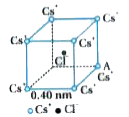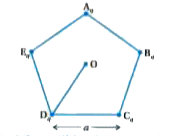Complete Solutions to SECTION C NCERT EXEMPLAR SOLUTION (SHORT ANSWER TYPE QUESTIONS) of chapter ELECTRIC CHARGES AND FIELDS of Class 12 book with complete answers and questions
| Class 12 | PHYSICS |
| Chapter | ELECTRIC CHARGES AND FIELDS |
| KUMAR PRAKASHAN | SECTION C NCERT EXEMPLAR SOLUTION (SHORT ANSWER TYPE QUESTIONS) |
| Number Of Questions | 6 |
| Academic Year | 2023-24 |
A paisa coin is made up of Al-Mg alloy and weighs 0.75 g. It has a square shape and its diagonal measures 17 mm. It is electrically neutral and contains equal amounts of positive and negative charges.
Treating the paisa coins made up of only Al, find the magnitude of equal number of positive and negative charges. What conclusion do you draw from this magnitude ?
View SolutionConsider a coin of Question 20. It is electrically neutral and contains equal amounts of positive and negative charge of magnitude 34.8 kC. Suppose that these equal charges were concentrated in two point charges separated by:
(i) 1 cm `(-1/2) xx` displacement of the one paisa coin)
(ii) 100 m (-length of a long building)
(iii) `10^(6)` m (radius of the earth).
Find the force on each such point charge in each of the three cases. What do you conclude from these results ?
View SolutionFigure represents a crystal unit of cesium chloride, CsCl. The cesium atoms, represented by open circles are situated at the corners of a cube of side 0.40nm, whereas a CI atom is situated at the centre of the cube. The Cs atoms are deficient in one electron while the CI atom carries an excess electron.
(i) What is the net electric field on the CI atom due to eight Cs atoms ?
(ii) Suppose that the Cs atom at the corner A is missing. What is the net force now on the CI atom due to seven remaining Cs atoms ?

View SolutionTwo charges q and - 3q are placed fixed on x-axis separated by distance'd'. Where should a third charge 2q be placed such that it will not experience any force ?

View SolutionFigure shows the electric field lines around three point charges A, B and C.

(a) Which charges are positive ?
(b) Which charge has the largest magnitude ? Why ?
In which region or regions of the picture could the electric field be zero ? Justify your answer.
(i) Near A, (ii) Near B
(iii) Near C, (iv) Nowhere
View SolutionFive charges, q each are placed at the corners of a regular pentagon of side 'a' as in figure:

(a) (i) What will be the electric field at O, the centre of the pentagon ?
(ii) What will be the electric field at O if the charge from one of the corners (say A) is removed ?
(iii) What will be the electric field at O if the charge q at A is replaced by -q ?
(b) How would your answer to (a) be affected if pentagon is replaced by n-sided regular polygon with charge q at each of its corners ?
View Solution
SECTION C NCERT EXEMPLAR SOLUTION (SHORT ANSWER TYPE QUESTIONS) questions and complete solutions for chapter ELECTRIC CHARGES AND FIELDS of KUMAR PRAKASHAN KENDRA PHYSICS (GUJRATI ENGLISH) of Class 12
All Exercises from KUMAR PRAKASHAN Class 12 PHYSICS ELECTRIC CHARGES AND FIELDS
- SECTION A QUESTIONS- ANSWERS
- SECTION A QUESTIONS- ANSWERS ( Higher Order Thinking Skills (HOTS) Unification Of Electricity And Magnetism)
- SECTION A QUESTIONS- ANSWERS (ADDITIVITY OF CHARGES)
- SECTION A QUESTIONS- ANSWERS (APPLICATION OF GAUSS.S LAW)
- SECTION A QUESTIONS- ANSWERS (BASIC PROPERTIES OF ELECTRIC CHARGE)
- SECTION A QUESTIONS- ANSWERS (CHARGE IS CONSERVED)
- SECTION A QUESTIONS- ANSWERS (CHARGING BY INDUCTION)
- SECTION A QUESTIONS- ANSWERS (CONDUCTORS AND INSULATORS)
- SECTION A QUESTIONS- ANSWERS (CONTINOUS CHARGE DISTRIBUTION)
- SECTION A QUESTIONS- ANSWERS (COULOMB.S LAW)
- SECTION A QUESTIONS- ANSWERS (DIPOLE IN UNIFORM EXTERNAL FIELD)
- SECTION A QUESTIONS- ANSWERS (ELECTRIC DIPOLE)
- SECTION A QUESTIONS- ANSWERS (ELECTRIC FIELD LINES)
- SECTION A QUESTIONS- ANSWERS (ELECTRIC FLUX)
- SECTION A QUESTIONS- ANSWERS (FIELD DUE TO A UNIFORMLY CHARGED THIN SPHERICAL SHELL)
- SECTION A QUESTIONS- ANSWERS (FIELD DUE TO AN INFINITELY LONG STRAIGHT UNIFORMLY CHARGED WIRE)
- SECTION A QUESTIONS- ANSWERS (FIELD DUE TO AN UNIFORMLY CHARGED INFINITE PLANE SHEET)
- SECTION A QUESTIONS- ANSWERS (FORCES BETWEEN MULTIPLE CHARGES)
- SECTION A QUESTIONS- ANSWERS (GAUSS.S LAW)
- SECTION A QUESTIONS- ANSWERS (PHYSICAL SIGNIFICANCE OF DIPOLES)
- SECTION A QUESTIONS- ANSWERS (THE FIELD OF AN ELECTRIC DIPOLE)
- SECTION A QUESTIONS- ANSWERS (TRY YOURSELF )
- SECTION B NUMERICALS (ADDITONAL EXERCISE)
- SECTION B NUMERICALS (NUMERICAL FOR .DARPAN. BASED ON TEXTBOOK)
- SECTION B NUMERICALS (NUMERICAL FROM TEXTUAL EXERCISES)
- SECTION B NUMERICALS (NUMERICAL FROM TEXTUAL ILLUSTRATIONS)
- SECTION C NCERT EXEMPLAR SOLUTION (LONG ANSWER TYPE QUESTIONS)
- SECTION C NCERT EXEMPLAR SOLUTION (MULTIPLE CHOICE QUESTIONS (MCQs))
- SECTION C NCERT EXEMPLAR SOLUTION (MULTIPLE CHOICE QUESTIONS (MORE THAN ONE OPTION))
- SECTION C NCERT EXEMPLAR SOLUTION (SHORT ANSWER TYPE QUESTIONS)
- SECTION C NCERT EXEMPLAR SOLUTION (VERY SHORT ANSWER TYPE QUESTIONS)
- SECTION D (MULTIPLE CHOICE QUESTIONS (MCQS)) (MCQS FROM .DARPAN. BASED ON TEXTBOOK) (ASSERTION AND REASON TYPE MCQs)
- SECTION D (MULTIPLE CHOICE QUESTIONS (MCQS)) (MCQS FROM .DARPAN. BASED ON TEXTBOOK) (CONTINUOUS DISTRIBUTION OF CHARGE AND ELECTRIC FLUX)
- SECTION D (MULTIPLE CHOICE QUESTIONS (MCQS)) (MCQS FROM .DARPAN. BASED ON TEXTBOOK) (ELECTROSTATIC ELECTRIC CHARGE AND FRICTIONAL ELECTRICAL CHARGE)
- SECTION D (MULTIPLE CHOICE QUESTIONS (MCQS)) (MCQS FROM .DARPAN. BASED ON TEXTBOOK) (LECTRIC FIELD AND ELECTRIC DIPOLE)
- SECTION D (MULTIPLE CHOICE QUESTIONS (MCQS)) (MCQS FROM .DARPAN. BASED ON TEXTBOOK) (MISCELLANEOUS MCQs)
- SECTION D MCQS ASKED IN COMPETITIVE EXAMES (MCQS AKSED IN BOARD EXAM AND GUJCET)
- SECTION D MCQS ASKED IN COMPETITIVE EXAMES (MCQS ASKED IN AIEEE AND JEE MAINS)
- SECTION D MCQS ASKED IN COMPETITIVE EXAMES (MCQS ASKED IN CBSE-PMT AIPMT NEET)